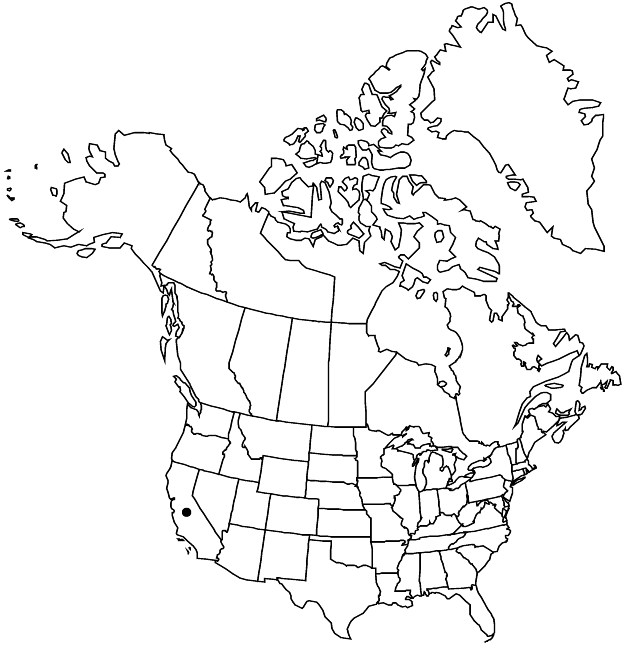Chorizanthe obovata
Ann. Missouri Bot. Gard. 21: 70. 1934.
Plants erect to prostrate, (0.5–)1–3(–4) × 1–4(–5) dm, pubescent. Leaves basal; petiole 0.5–2(–3) cm; blade oblanceolate, 0.5–2.5 × 0.3–1 cm, thinly pubescent adaxially, soft-hirsute abaxially. Inflorescences with involucres in open clusters 2–4(–6) cm diam., greenish or reddish; bracts 2–3 at proximal node, usually leaflike, without whorl of sessile bracts about midstem, elliptic, 0.5–1.5 cm × 2–6(–8) mm, abruptly reduced above proximal node, becoming scalelike, linear, aciculate, acerose, 0.2–1 cm × 1–3 mm, awns straight, 1–2 mm. Involucres 3–10+, grayish, urceolate, slightly ventricose basally, 3–4 mm, slightly corrugate, without scarious or membranous margins, thinly to densely pubescent; teeth erect to spreading, unequal, 1–2 mm; awns straight or uncinate with longer anterior one straight, mostly 1 mm, others uncinate, 0.5–1 mm. Flowers exserted; perianth bicolored with floral tube greenish white to white and tepals white to pink, cylindric, 4–4.5(–5) mm, sparsely pubescent; tepals connate 1/2 their length, dimorphic, obovate, those of outer whorl spreading, 2 times longer than those of inner whorl, rounded or slightly obcordate apically, those of inner whorl erect, narrower, fimbriate apically; stamens (6–)9, mostly included; filaments distinct, 4–4.5 mm, glabrous; anthers yellow to golden, oblong, 0.9–1.1 mm. Achenes brown, globose-lenticular, 3–3.5 mm. 2n = 38, 40, 42.
Phenology: Flowering May–Jul.
Habitat: Sandy or calcareous soils, mixed grassland, coastal scrub, or chaparral communities, pine-oak woodlands
Elevation: 10-1300 m
Discussion
Chorizanthe obovata is found in the Coast Ranges. The whitish flowers quickly distinguish it from C. palmeri and the other reddish-flowered members of this complex. Immature plants can be confused with C. staticoides; the floral features readily separate the two species.
Selected References
None.
